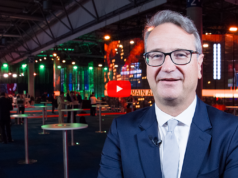
Despite homogenous professional society recommendations, significant global variation still exists in the management of abdominal aortic aneurysms, a US study published in Circulation has shown. The variation is especially marked in intact aneurysm diameter at repair, use of endovascular aneurysm repair (EVAR) and the treatment of elderly patients, the authors, led by Adam W Beck (Birmingham, USA) and Kevin Mani (Uppsala, Sweden), report.
Conducted by the ICVR (International Consortium of Vascular Registries), the investigation was a collaboration of 11 vascular surgical quality registries designed to evaluate international variation in the management of abdominal aortic aneurysm with relation to recommended treatment guidelines from the Society for Vascular Surgery and the European Society for Vascular Surgery. The report is the first such study allowing an assessment of variations in repair of abdominal aortic aneurysms in 11 countries (Australia, Denmark, Finland, Germany, Hungary, Iceland, New Zealand, Norway, Sweden, Switzerland and the USA) over three continents represented by two large societies with existing clinical guidelines for abdominal aortic aneurysm management.
“The aim of these [existing] guidelines is to settle uncertainties in management and to identify best practices,” Beck et al explain. “However, treatment choices may be driven not only by clinical and medical science but also by cultural differences, economic incentives, access to technology, physician skill set, and patient/physician preference. Historically, significant variation in the management of abdominal aortic aneurysms has been noted between some countries, but wider international variation related to society guidelines has not been assessed.”
Registry data for open and endovascular repairs performed from 2010 to 2013 were collected from the 11 featured countries.Variations in patient selection and treatment were compared across countries and across centres within countries. Of the 51,153 patients identified, 86% were treated for intact aneurysms and 14% for ruptured aneurysms. Women constituted 18% of the entire cohort (the lowest being 12% in Switzerland and the highest being 21% in the USA; p<0.01).
Intact aneurysms were repaired at diameters smaller than recommended by guidelines in 31% of men (<5.5cm; range from 6% in Iceland to 41% in Germany; p<0.01) and 12% of women with intact aneurysms (<5cm; range from 0% in Iceland to 16% in the USA; p<0.01). There was an overall trend toward lower rates of ruptured aneurysm repair over time, falling from 19% in 2010 to 17.6% in 2013 (p=0.16).
Overall, use of EVAR for intact aneurysms varied from a rate of 28% in Hungary to 79% in the USA (p<0.01) Fewer than 40% of intact aneurysm repairs in Hungary, Norway and Denmark were performed using EVAR, compared with more than 60% of intact aneurysm repairs in Germany, Australia, and the USA. For ruptured aneurysms, EVAR usage ranged from 5% in Denmark to 52% in the USA (p<0.01).
In addition to the international variations, significant variations were identified between centres in each country in terms of EVAR use and rate of small aneurysm repair. Countries that more frequently treated small aneurysms tended to use EVAR more frequently (trend: correlation coefficient, 0.51; p=0.14).
Mean age was 72.5 years for men and 74.7 years for women at treatment. The mean treatment age in men was the lowest in Hungary at 68.8 years and the highest in in Australia 74.1 years (p<0.01). For women, mean treatment age was also lowest in Hungary (72.1 years) and highest in Australia (76.6 years; p<0.01). Octogenarians made up 23% of all patients, ranging from 12% in Hungary to 29% in Australia (p<0.01).
In countries with some component of their healthcare system made up by fee-for-service reimbursement for care (Australia, Germany, Switzerland and the USA), the proportions of small aneurysm (33%) and octogenarians undergoing intact aneurysms repair (25%) were higher compared with countries with a population-based reimbursement model (small aneurysm repair 16%; octogenarians 18%; p<0.01).
Interestingly, there was also significant variation between centres related to annual procedural volume. The lowest-volume centres performed less than 30 aneurysm repairs each year, while the highest-volume centres performed 95 or more repairs annually. The proportion of intact aneurysm repairs performed at low-volume centres ranged from 20% in Sweden and the USA to 46% in Australia (p<0.001). “In general,” the authors write, “centre-level variation within countries in the management of aneurysms was as important as variation between countries.”
“The study demonstrates that significant variation exists between and within countries in the management of both elective and emergent abdominal aortic aneurysm repair with regard to surgical technique and management of elderly patients,” the authors suggest. “These differences in management correlate with healthcare reimbursement models, which may explain some of the variation.”
In closing, Beck and colleagues write that the report indicates that “healthcare system and reimbursement have as much impact on treatment patterns and indication for surgery as scientific studies and guidelines, with both positive and negative incentives potentially affecting practice.”
“There is an opportunity for further international harmonisation of treatment algorithms for abdominal aortic aneurysm repair, especially considering the strength of existing guidelines for intact repair.”













